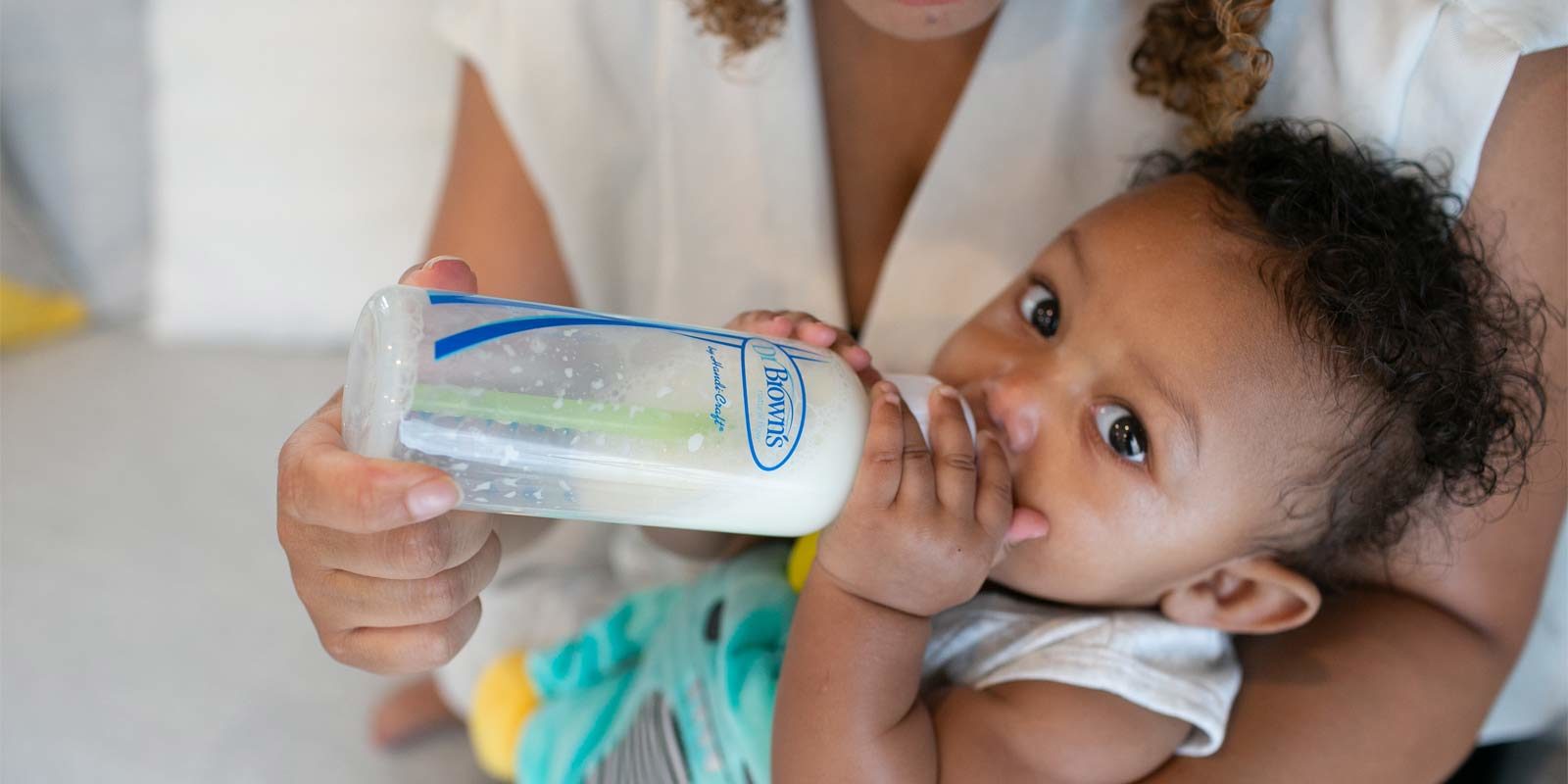If your family is ready to introduce a bottle to your baby, congrats! This time is special in so many ways—importantly, other caregivers can now experience a special bond with your infant while feeding them.
It also may bring questions and worries, such as: Will the baby accept the bottle? Will bottle feeding “confuse” the baby when it’s time to go back to breastfeeding? Paced bottle feeding might be your answer to these questions.
Paced bottle feeding is a method of bottle feeding that slows the flow—or, pace—of milk for the baby drinking from the bottle. Typically, caregivers achieve this slower pace by holding the bottle horizontally, instead of vertically, while baby drinks. This control of the flow of milk benefits babies because it encourages more intuitive eating. This allows baby to control the amount of milk they consume, by taking breaks when they want or need to (similar to how babies breastfeed).
Further, when a baby eats more slowly, they’re less likely to eat too much. In this way, paced bottle feeding can decrease the frequency of gassiness or reflux-like symptoms. Paced bottle feeding also gives parents and caregivers the opportunity to observe how much milk their infant is naturally consuming. This can help better manage milk volume amounts in each bottle and ultimately reduce milk waste.
A step-by-step instruction of paced bottle feeding can be a good start on the paced bottle-feeding journey. I recommend videos and physical demonstrations for families to learn and model this technique. (Here’s a quick fun Instagram reel of one type of paced bottle-feeding technique.) With paced bottle feeding, It’s helpful to remember the key goal is to mimic a slower, more controlled feeding. So, no matter what physical position you or the baby are in, remember to control the flow to allow baby to have a little more control of the feeding.
To set up for a session of paced bottle feeding, hold the baby upright in a more seated or partially reclined position. Avoid the baby lying completely down on their back. When offering the bottle, you’ll wait for the baby’s open mouth as an invitation or consent to the bottle. Once the baby is ready for the bottle, insert it in a horizontal position. The milk will be completely covering the bottle nipple tip without being fully tilted downwards. As the baby suckles, you’ll observe the suck/swallow/breathe coordination, making sure to stay tuned to when it slows down. Once the baby has slowed down, has a relaxed body posture, and is no longer actively feeding, the bottle can be removed. In this moment, it’s good to pause the bottle feeding and see how baby feels. You can try for a burp and then assess whether the baby wants more milk, or determine if the baby is full.
Paced bottle feeding ultimately is the closest way to mimic breastfeeding’s speed and control with a bottle. In this way, it increases the potential for bottle acceptance and decreases the potential for baby’s confusion when returning to breastfeeding. The aim is for the parent and the baby to be more attuned to what’s going on during the feeding. As always, if you have questions or concerns, or need more guidance on this feeding method, lactation consultants can help.
Sources:
https://www.cdc.gov/nutrition/infantandtoddlernutrition/bottle-feeding/index.html
Erica Campbell, RN, IBCLC, is a former Mother/Baby Registered Nurse and current Lactation Consultant (IBCLC). She founded The Milk Manual as a resource for all parents experiencing their infant feeding journeys. She is on the Dr. Brown’s Medical Expert Panel.
